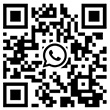the applicable industry of UV laser-Wilson
The applicable industry of UV laser
UV Laser is a very different technology from CO2 laser technology and optical fiber (Qswitch)-the applicable industry of UV laser
Today we will explain the main differences between these technologies.-the applicable industry of UV laser
Low temperature engraving, cold laser.
Also known as the blue laser or Blue Laser, this technology has the ability to record with a low percentage of heat. The light wave spectrum or ultraviolet light of this machine is one of the main reasons why this technology can record on different materials, because it does not heat the surface of the material as do the optical fiber laser and the CO2 laser. It allows the UV laser to mark clearly and with high precision on any plastic surface and other materials that have an adverse reaction with heat.
Plastics
First of all these are some of the plastic materials that UV technology can record without any problem.
Polyethylene (PE)
Polyvinyl Chloride (PVC)
Polypropylene (PP)
Polystyrene (PS)
Polylactic Acid (PLA)
Polycarbonate (PC)
Acrylic (PMMA)
Acetal (polyoxymethylene, POM)
Nylon (PA)
ABS (acrylonitrile butadiene styrene)
Other plastic not mentioned here including transparent plastics.
Metals
UV lasers can engrave and mark metals, but not always with the same effect as an optical fiber laser engraving machine. While an optical fiber laser engraving can mark on the metal surfaces with a profound effect and with a clear result, UV lasers have problems engraving metals coated with paint or highly reflective metals such as copper, or etching with depth effect on metals, this means that if you want deep engravings on coated metals or highly reflective metals.
Then I leave a list of some of the metal materials that this machine can engrave.
Aluminum
Gold
Platinum
Silver
Titanium
Brass
Stainless steel
Chrome
Among others not mentioned here.
Woods
Another the UV laser is a very complete engraving technology, ideal for engraving plastics in general and most metals. However, one of the significant advantages of this machine comes when it comes to engraving some non-metallic materials such as wood. This machine can make incredible engravings on different wooden surfaces. As a result the disadvantage of this is that it cannot make a deep and fast engraving like a galvo CO2 laser, but it can leave light and beautiful marking results.
Below is a list of wood materials that can be engraved with UV laser.
Mahogany
Nut
Oak
Ash
Birch
Maple
Cherry
Pine tree
Spruce
Cedar
Fir tree
Larch
MDF
Plywood
Vulcanized fiber
Among others not mentioned here.
Fabrics
Our UV laser machines can also record some fabrics with cotton content or with synthetic fibers. However, if you want to engrave on a specific fabric, so we can perform some tests to verify the engraving results before buying our machine.
Glass
The UV laser is one of those technologies that can engrave on glass surfaces without breaking them or overheating surfaces. You can create amazing prints and patterns without results of glass chips.
Paper and paperboard
The cardboard engraving also depends on the material. And the result is different from the usual engraving of CO2 machines. While CO2 machines carbonize the surface of cardboard or paper materials. So UV rays generate a chemical reaction that marks the surface of the material. That is why we can engrave with white color on cardboard surfaces, and if we want to engrave In black cardboard, as a result we can still get a clear contrast. If you have more questions about the engraving of this material.



